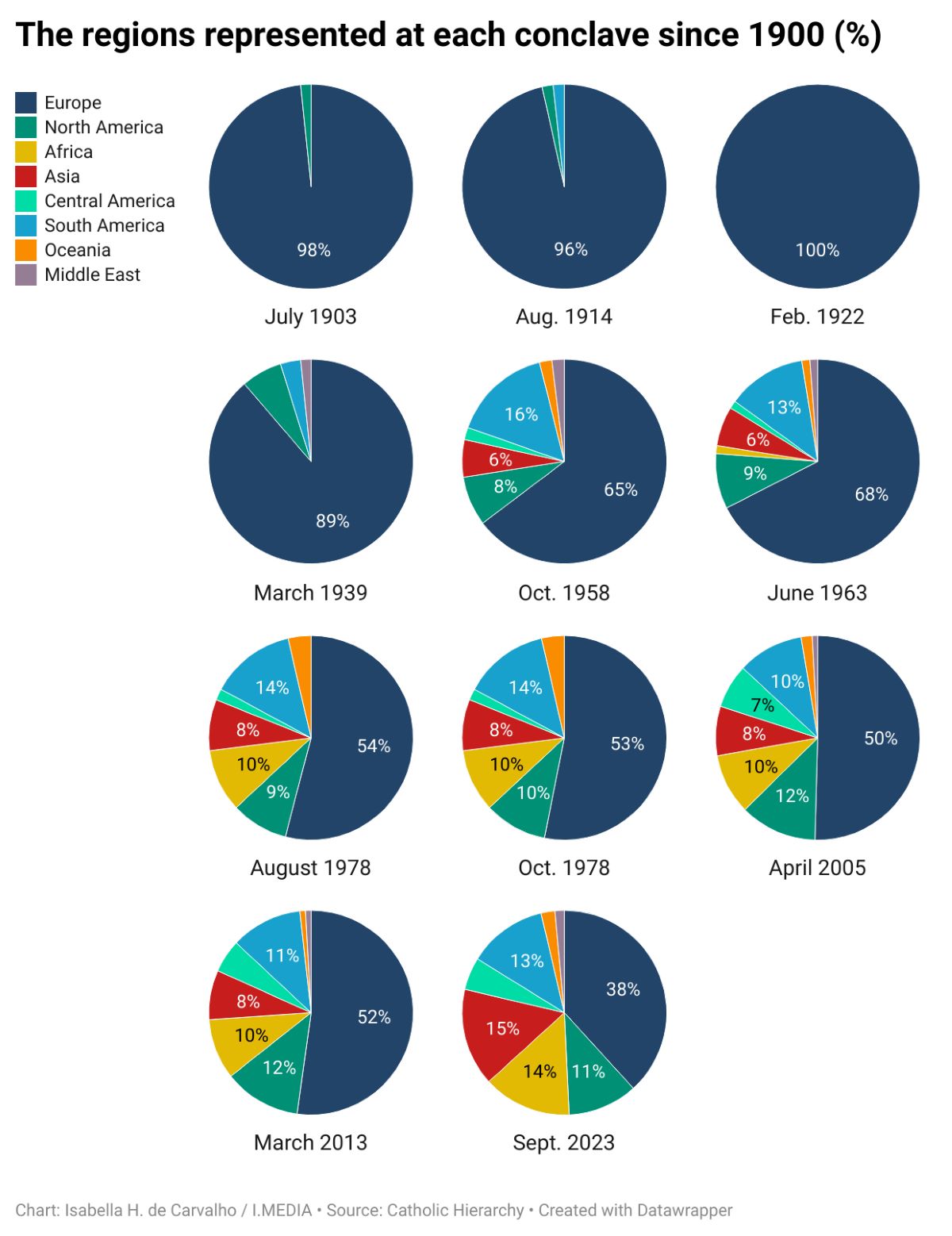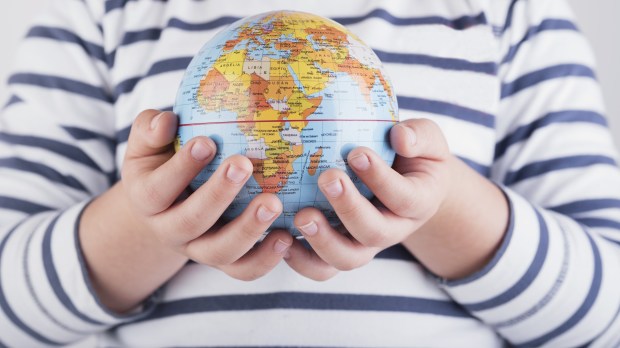Lenten Campaign 2025
This content is free of charge, as are all our articles.
Support us with a donation that is tax-deductible and enable us to continue to reach millions of readers.
From 2011 to 2021, Africa and Asia were the only continents that had an increase in the number of priests and these two regions now account for almost 60% of the world’s seminarians. This is the latest data on the Catholic Church, published in a report by the Vatican press agency Fides on October 20, 2023, and referring to the calendar year 2021.
While the data shows the Church is growing in certain continents, it also shows that within the same timeframe, Europe has lost around 27,000 priests, 6,000 seminarians, and almost 80,000 nuns.
Every year Fides, the Pontifical Mission Societies’ media outlet, publishes a statistical report highlighting the main trends within the Catholic Church, such as the number of Catholics, priests, etc.
In order to get a more nuanced picture of the evolution of Catholicism, I.MEDIA has analyzed this data over the course of a decade. Thus, the graphs presented below cover the period from 2011-2021, which includes a large part of Francis’ pontificate as he was elected in March 2013.
It should be noted that the Fides report does not distinguish between South and North America, but aggregates both regions in the “Americas,” This choice means that it is impossible to highlight the varying trends in these two areas of the world, which are faced with very different challenges and populations.
1
Catholic Population worldwide
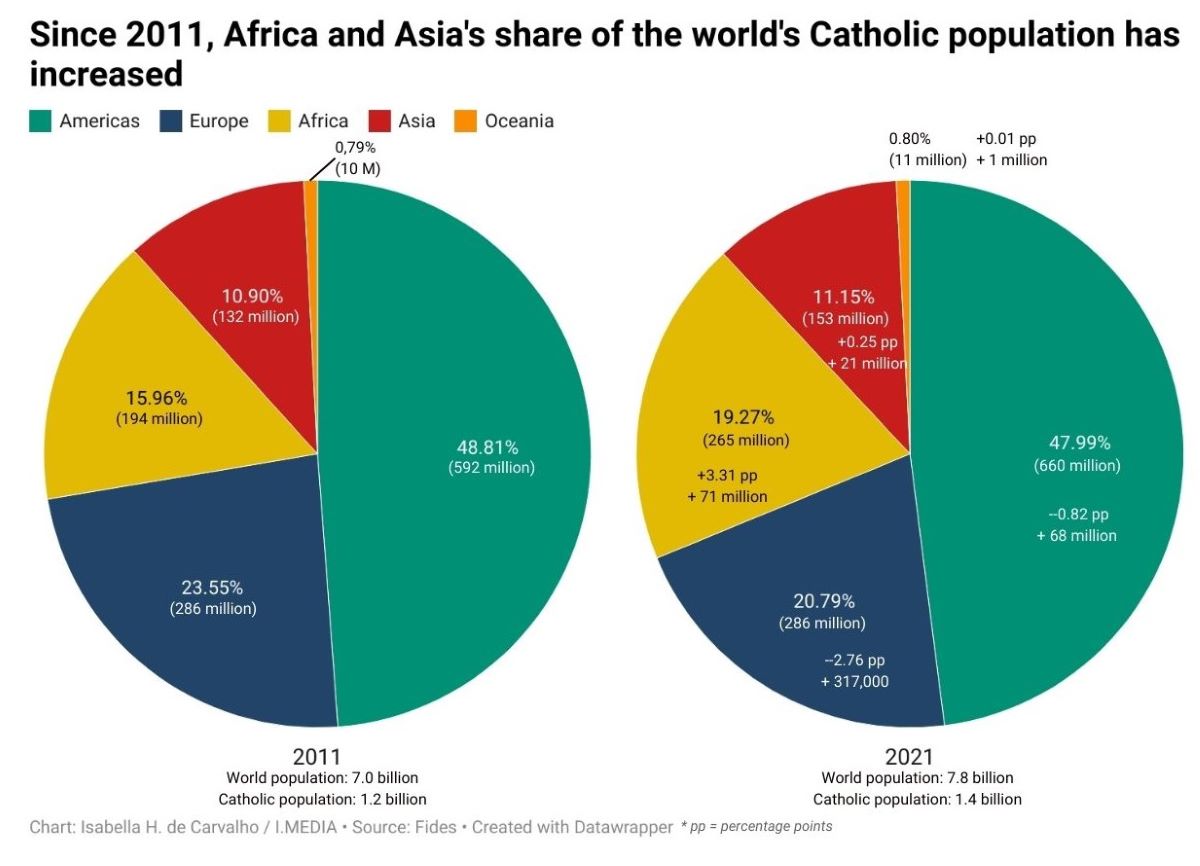
From 2011 to 2021, Africa gained 71 million new Catholics meaning the highest number of any continent. In 2021, there were 265 million Catholics, meaning there has been a 36% increase. Africa’s share of the world’s Catholic population has also greatly increased, as it has gained 3.31 percentage points in 10 years.
By contrast Europe has lost 2.76 percentage points over the same period. Although it has gained 317,000 faithful in 10 years, this is too small of an increase to mitigate the downward trend. Between 2020 and 2021, Europe lost 244,000 Catholics.
This quasi-stagnation in Europe contrasts with other parts of the world, which have all gained new faithful in larger proportions. Asia’s share of the world’s Catholic population has, for example, increased 0.25 percentage points.
2
Priests
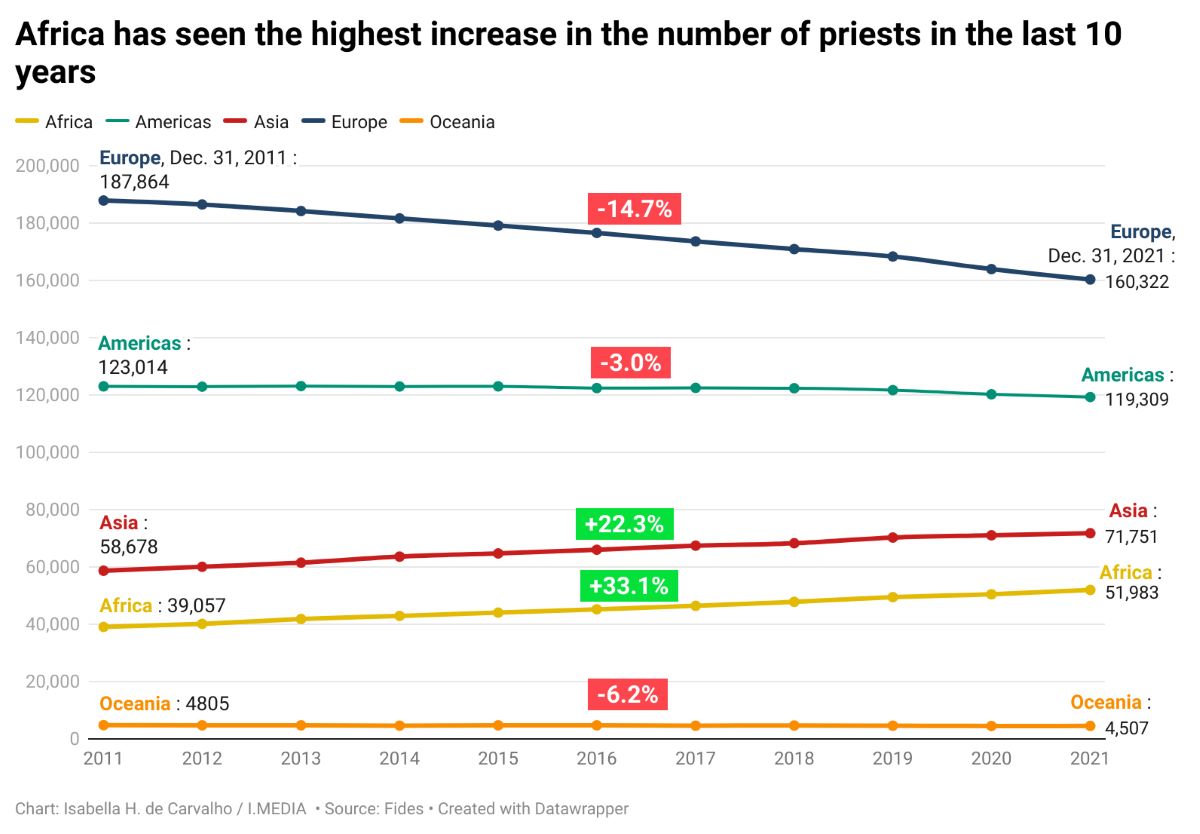
The sharp increase in the number of African Catholics is also combined with significant growth in the number of priests. From 2011 to 2021, Africa recorded a 33% increase, as it went from 39,000 priests to almost 52,000. In 2021, African priests represented around 12% of the world’s clergy.
Asia also saw a significant increase of 22%, as the continent had almost 59,000 priests in 2011 and almost 72,000 in 2021. In 2021, Asian priests represented 18% of the world’s clergy.
The good news coming from Africa and Asia, however, does not stop the overall global decline in the number of priests. In 2011 there were 413,418 priests worldwide, while in 2021 there were 407,872, meaning a decline of 1.34%.
Despite the decrease in the number of priests in Europe over the 10-year timeframe, 40% of the world’s clergy was European in 2021. However, the decrease is still evident, as in 2011 European priests represented 45% of the world’s clergy. Despite a small decrease in the number of priests from the Americas between 2011 and 2021, they still averaged out throughout the years to representing around 29% of the total population of the clergy.
3
Catholics per priest
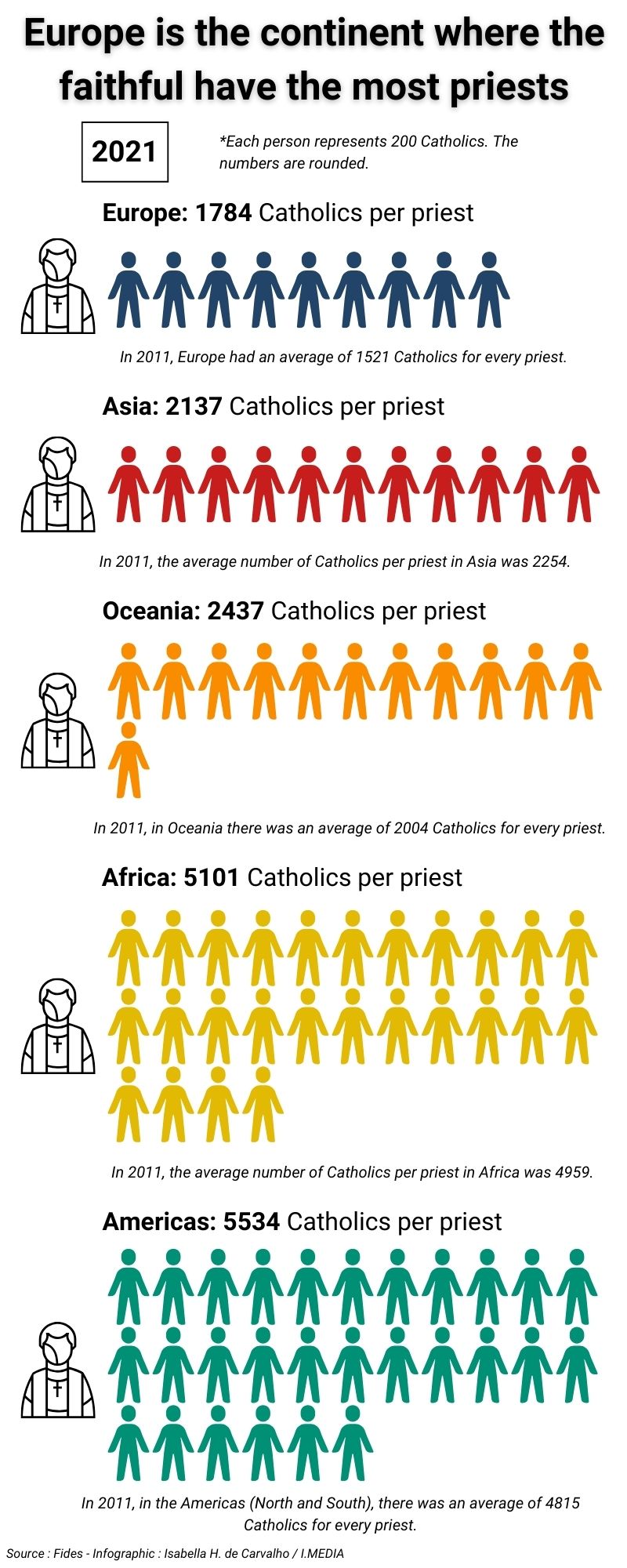
The graph above illustrates that, however, European Catholics are still the best served in terms of priests per number of faithful. Africa and the Americas instead have the highest number of Catholics per priest. Again recall that North and South America are combined in the data.
Since 2011 all continents have seen an increase in the number of faithful per priest, except Asia, which has seen a slight improvement. In 2011 one priest served 2,254 Asian Catholics, while in 2021 he served 2,137 faithful.
4
Seminarians
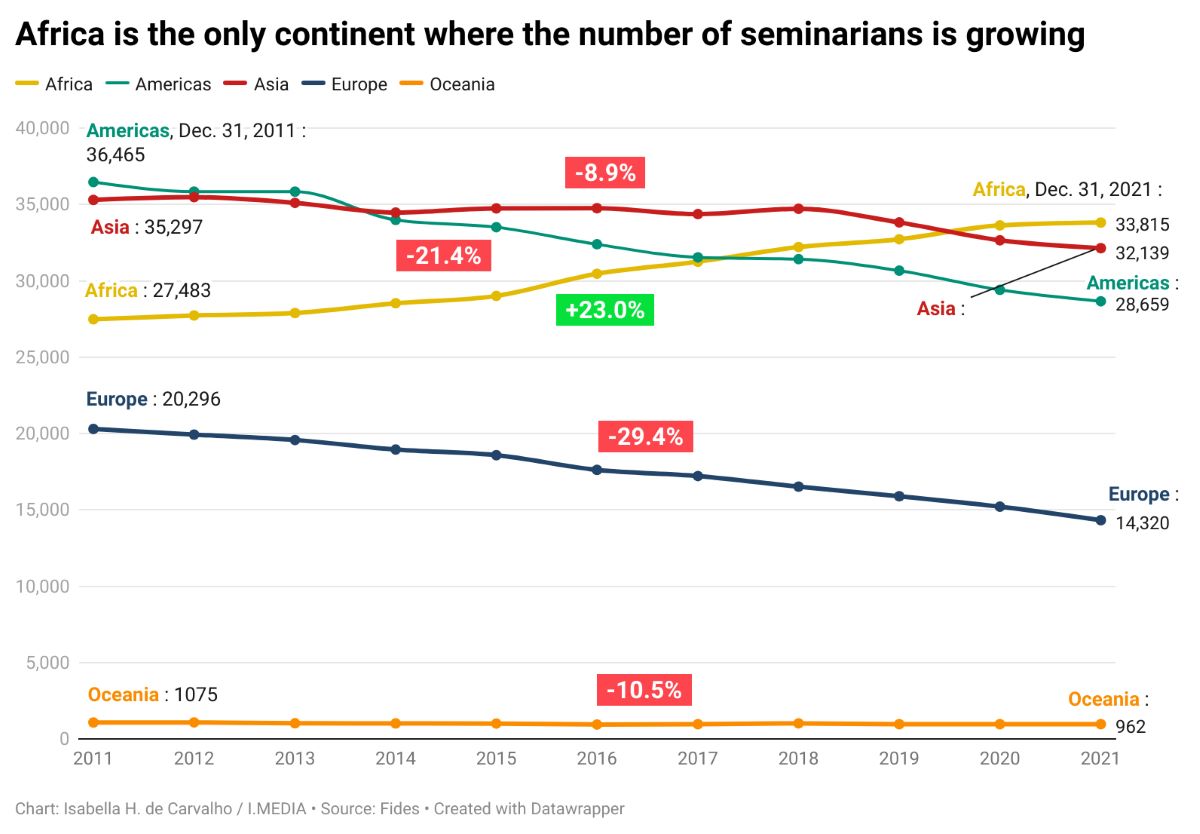
The current decline in the number of priests worldwide could become even more pronounced, given the global decrease in the number of seminarians. Just as the Catholic Church has fewer priests today than it did 10 years ago, the number of seminarians has also fallen, from 120,616 in 2011 to 109,895 in 2021.
However, Africa again shows promising signs as in 2020 it passed Asia as the continent having the most seminarians, an increase that continued in the following year. In fact by December 31, 2021, 31% of the world’s seminarians were African. As mentioned before, that same year the number of African priests represented 12% of the world’s clergy.
Asian seminarians instead represented 29% of the total, meaning that together African and Asian seminaries train 60% of the Church’s possible future priests. It’s worth noting that while Asia had an average of 35,000 candidates for the priesthood since 2011, there seems to have been a slight drop since 2018. At the end of 2021, the continent had around 32,000 seminarians.
The Americas have also seen a 21% decrease in the number of seminarians since 2011. However, in 2021, seminarians from this area of the world still constituted around 26% of the total. Europe instead has seen a consistent downward trend, of around 29%, with only 13% of seminarians worldwide being European.
5
Male and female religious
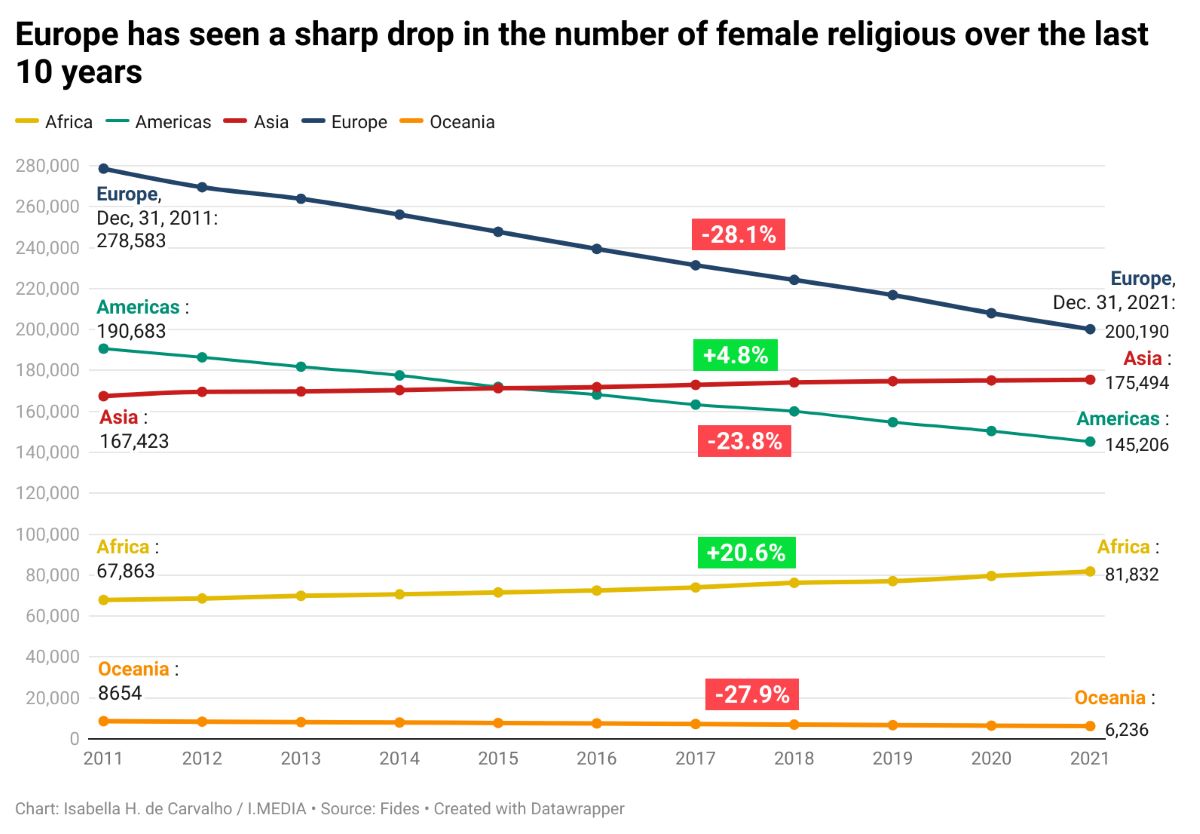
Europe has seen a drastic decline in its number of female religious, as it has lost almost 80,000 members of this category, meaning around a quarter of the consecrated, in the span of 10 years. The Americas and Oceania have also seen a sharp decline in the number of female religious, and in fact globally there were 713,206 nuns and sisters in 2011 and 608,958 in 2021 (-104,248)
However, Africa again shows an increase in the number of female religious by around 21%, as there were around 67,000 members of this category in 2011 and around 82,000 in 2021. In Asia there was also a small increase.
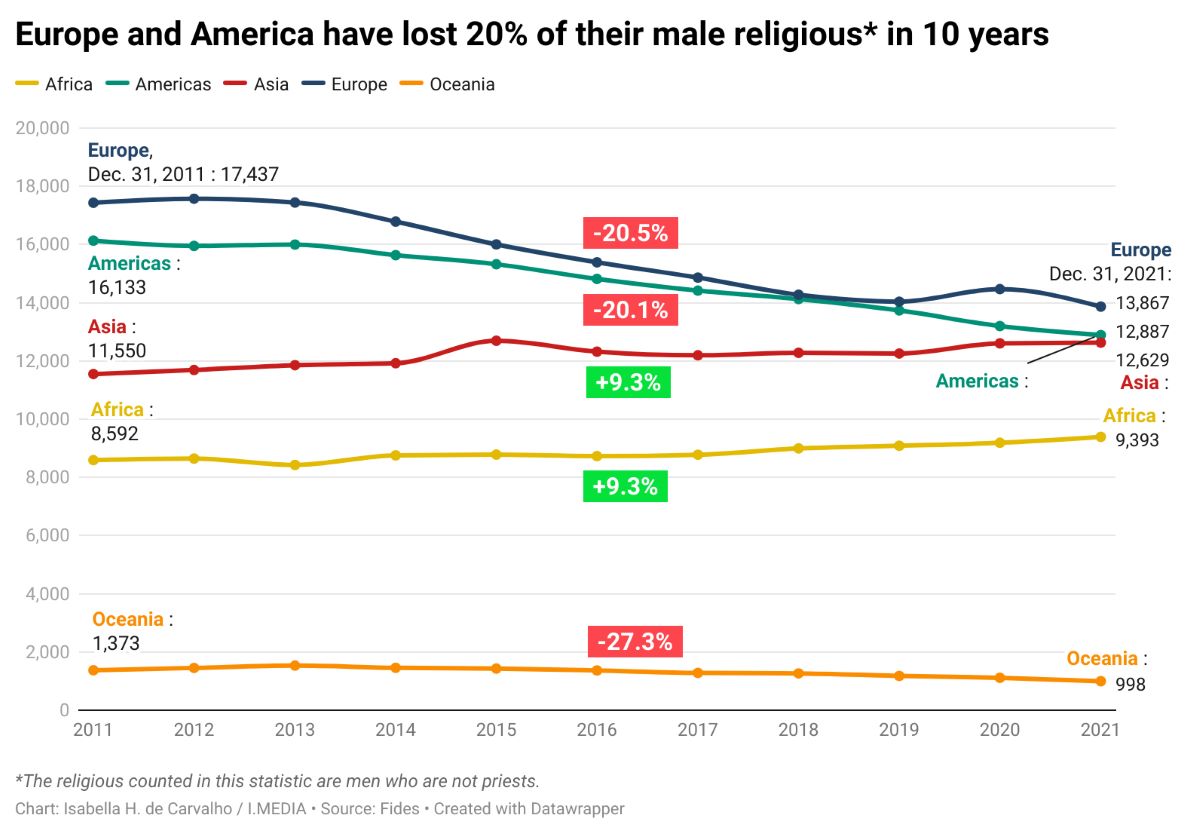
The graph showing the evolution of the number of male religious worldwide also again underlines the extent to which the Catholic Church in Europe is losing ground. While the trend is still upward in Africa and Asia, it cannot compensate for the decrease in Europe and the Americas.
6
Pope Francis’ pontificate
Since 2013, Pope Francis, the first South American Pontiff in history, has taken these developments into account. He has, for example, substantially transformed the composition of the College of Cardinals, who are expected to assist him in his government and one day elect his successor.
In fact the rise of Africa and Asia within the College of Cardinals is evident: from 8% to 15% for Asian cardinals, and from 10% to 14% for Africans. The current composition of the College of Cardinals also reflects the overall decline in practice in Europe. In 2013, 52% of the cardinals who elected Francis were Europeans. Today, they make up just 38% of the college of electors.
